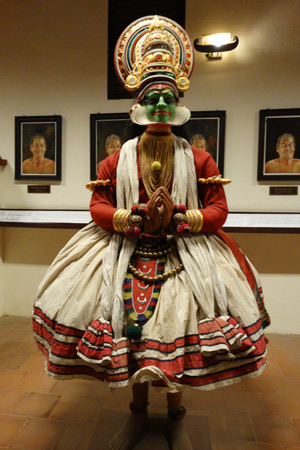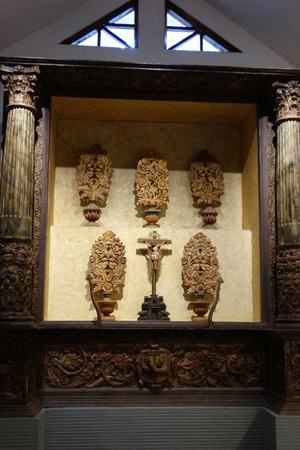As party of International Council of Museums' (ICOM) initiative, since 1977, May 18 each year is celebrated as International Museum Day. Many of us take museums for granted and refuse to look at them as anything more a building that houses artefacts from a time gone by. International Museum Day reminds us that past is just as important as the present and the future as museums offer a insight into the evolution of a culture and a society.
As we mark the 38th International Museum Day, let's take a close look at the rich history of Fort Kochi, one of the first European colonies in colonial India, through its three most popular museums. Fort Kochi was first occupied by Portuguese in 1503 and then by Dutch before, finally, coming under the British rule. In 1947, when India gained independence from the British Raj, it was one of the first princely states to join the Indian Union. Thus, this place not only stands witness to the history of European colonialism in India but also holds the past close to its heart.
Greenix Village
Kalvathy Road, Fort Kochi
Greenix Village, a performance arts museum, was once a warehouse for a tea factory built by the Portuguese. The structure of the building was renovated extensively in accordance with traditional Kerala architecture. The inside of the building is redone to make it look like the inside of a Kerala temple with an idol of Natarajan and a mandampam at the far end of the hall.
 A statue of a Kathakali artiste at Greenix Village in Fort Kochi
A statue of a Kathakali artiste at Greenix Village in Fort Kochi
The museum showcases various statues in different art forms. The exhibited paintings are of traditional dance forms focusing on various mudras (hand signs) and navarasams (nine expressions based on Indian dramatic theory) that are of great significance in Kathakali performances. The museum also provides a platform for live performances including Kathakali, Theyam, Mohiniyattam and Kalaripayuttu.
Indo-Portuguese Museum Bishop’s House, Fort Kochi
Indo-Portuguese Museum was built by the late Bishop of Kochi, Dr. Joseph Kureethara, to protect the culture and heritage of the place. Most of the artefacts showcased in the museum are made of wood and silver and are from the time of the Portuguese rule in Fort Kochi. The Indo-Portuguese Museum is categorised under five themes–the altar, treasures, procession, civil life and cathedral.
 An altarpiece structure from the 16th century at Indo-Portuguese Museum in Fort Kochi
An altarpiece structure from the 16th century at Indo-Portuguese Museum in Fort Kochi
The museum houses an altarpiece structure, originally from the Church of St. Antony, from the 16th century. The altarpiece is carved in teakwood and has traces of gold. It also has on display many processional cross from the 16th century and monstrance from the 18th and 19th centuries. Other displayed objects include St. Sebastian Church's pulpit made of teakwood from the 19th century and an altar canopy depicting the dove of holy spirits and angels.
The Dutch Palace
Mattancherry
Also known as the Mattancherry palace, the museum preserves Fort Kochi's past from the times of various regimes that shaped the history of Kerala. The museum houses contributions from the Portuguese, Dutch and Indian rulers. The original structure was built by the Portuguese and given to Raja Veera Kerala Varma of Kochi. Later, the Dutch renovated and made major changes to the building, thereby calling it the Dutch Palace. The palace also houses a Bhagavathi as well as a Shiva temple, which now are managed by the Devaswom Board.
The museum exhibits a mural painting, depicting the stories of various gods and goddesses, covering about 300 square feet of its walls. At the entrance, a palanquin used by the royal family and a painting of the king and his men welcome the visitors. One of the rooms at the palace displays various stamps that were used during Rama Varma's regime. Another room houses the portraits of the kings and paintings from their period.
One of the most exquisite objects at the Dutch Palace is a palanquin made of ivory that was used by the royal family during the 18th century. The museum also has on display the sword given to Rama Varma, when he was was conferred the title of knighthood, by then Prince of Wales. The palace gives a glimpse into the day-to-day life of the royal family.






